7. python 函数
函数 def
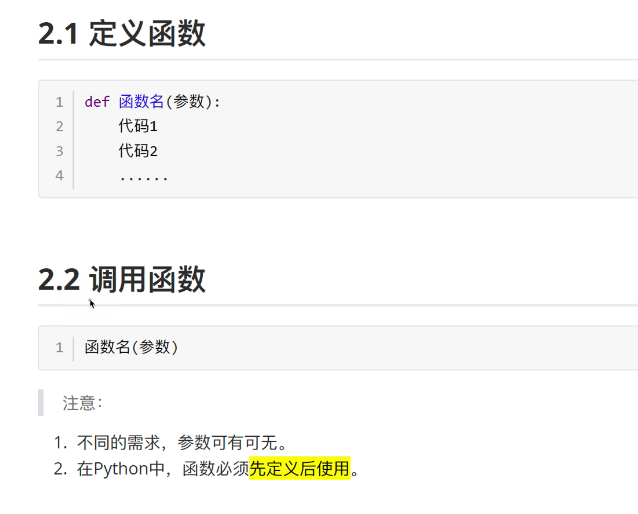

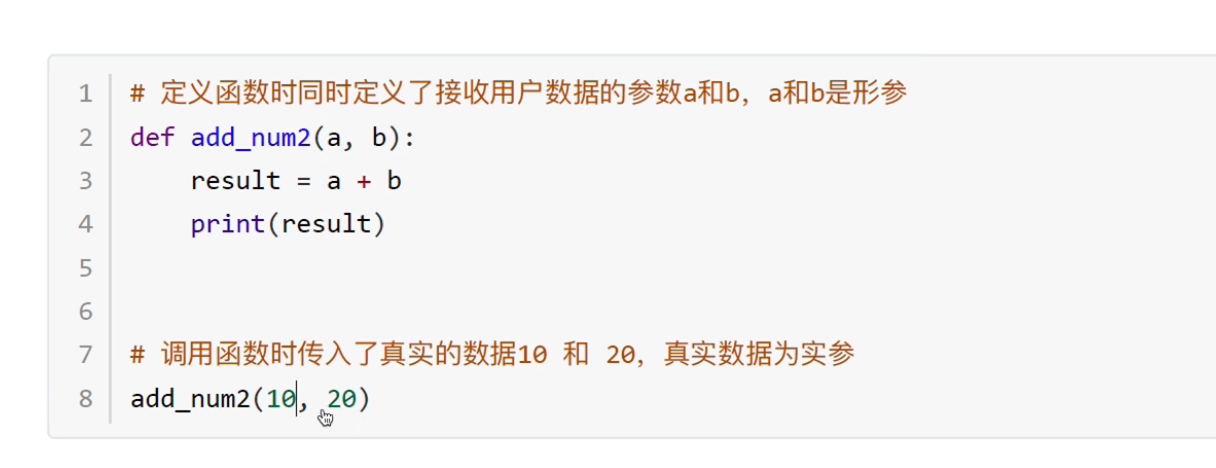
函数 return 的注意点 和 函数文档
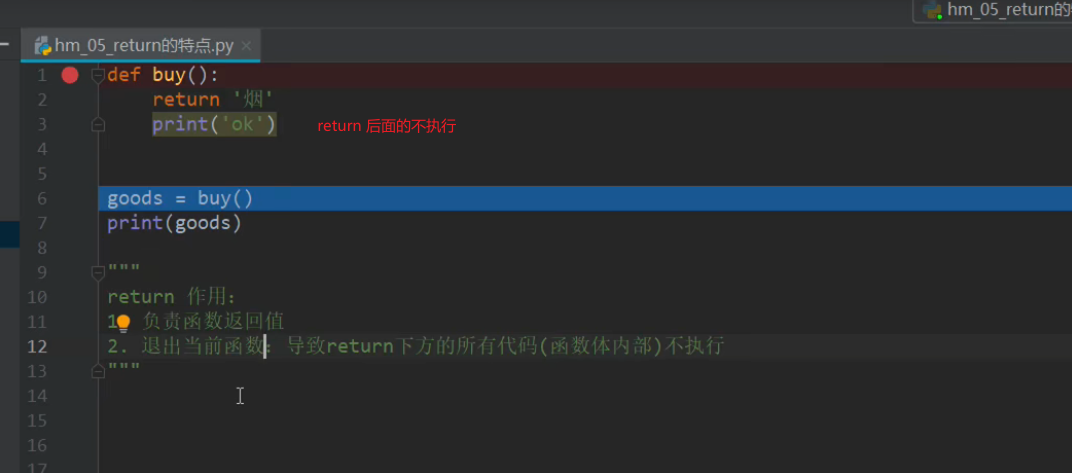
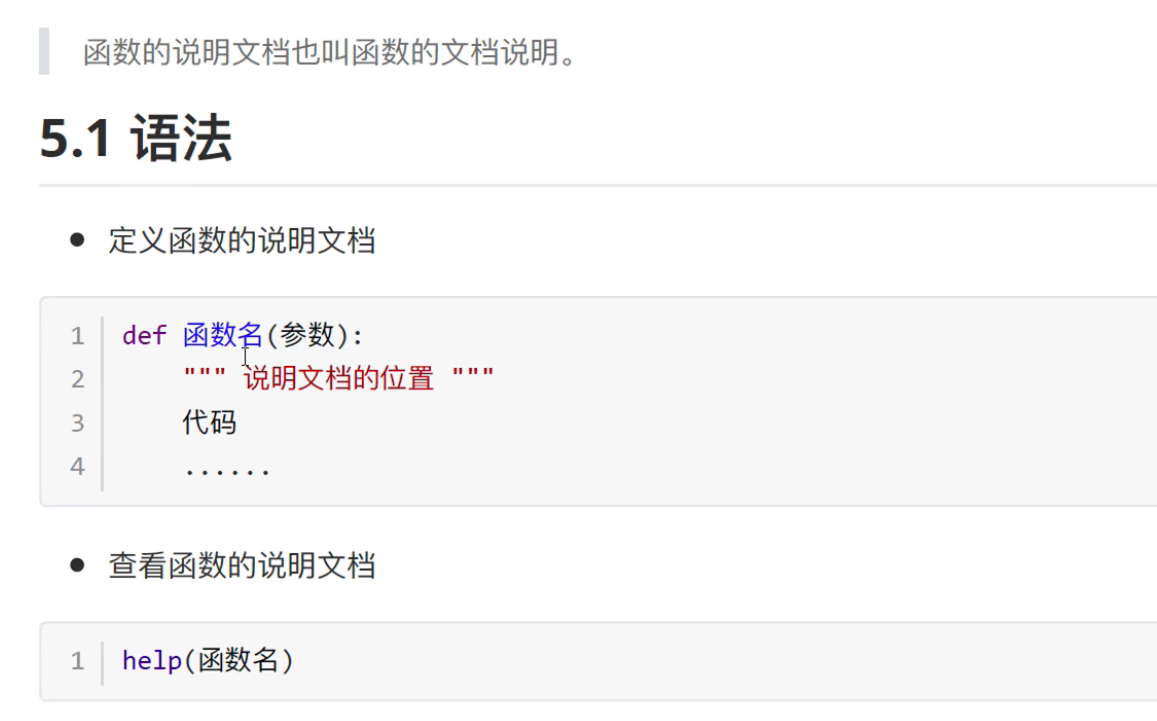
变量的作用域 局部变量 全局变量
# 局部变量
def testA():
a = 100
print(a)
testA()
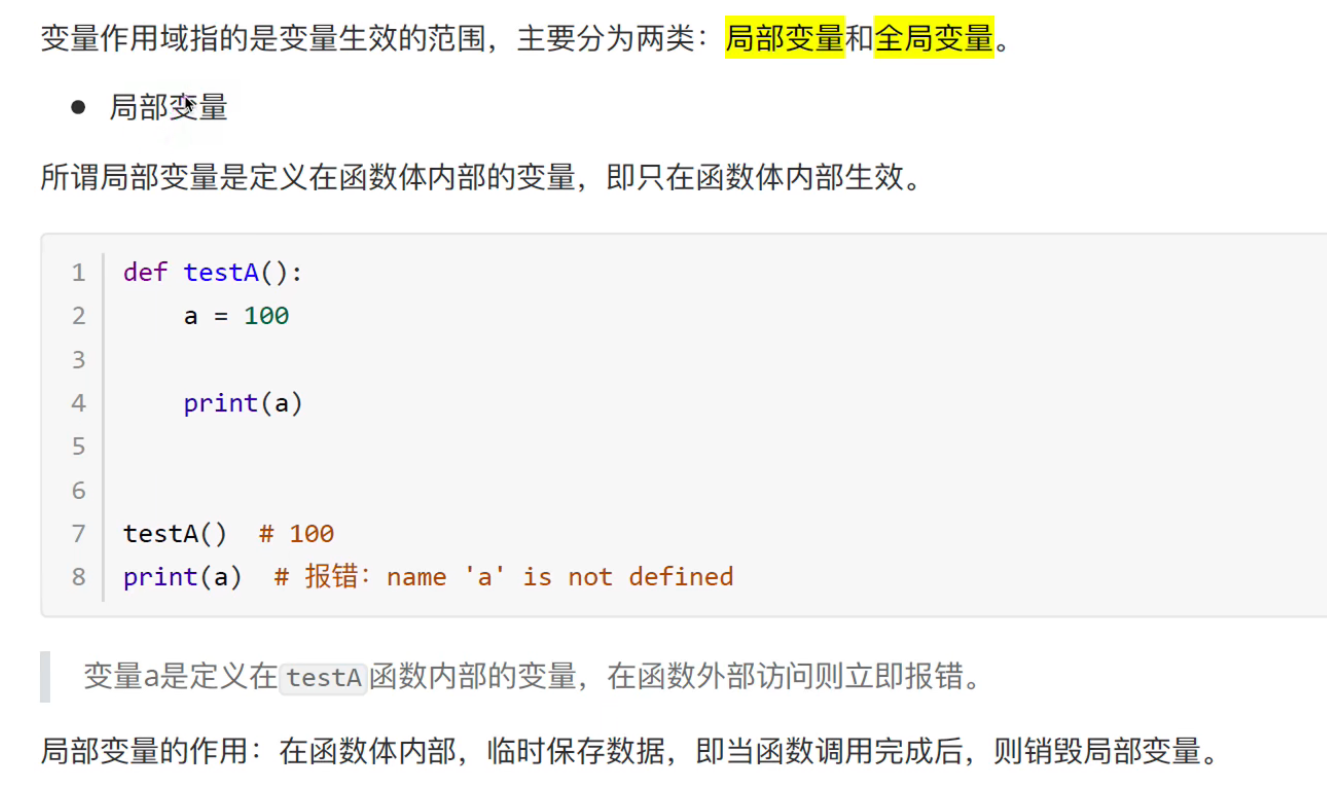
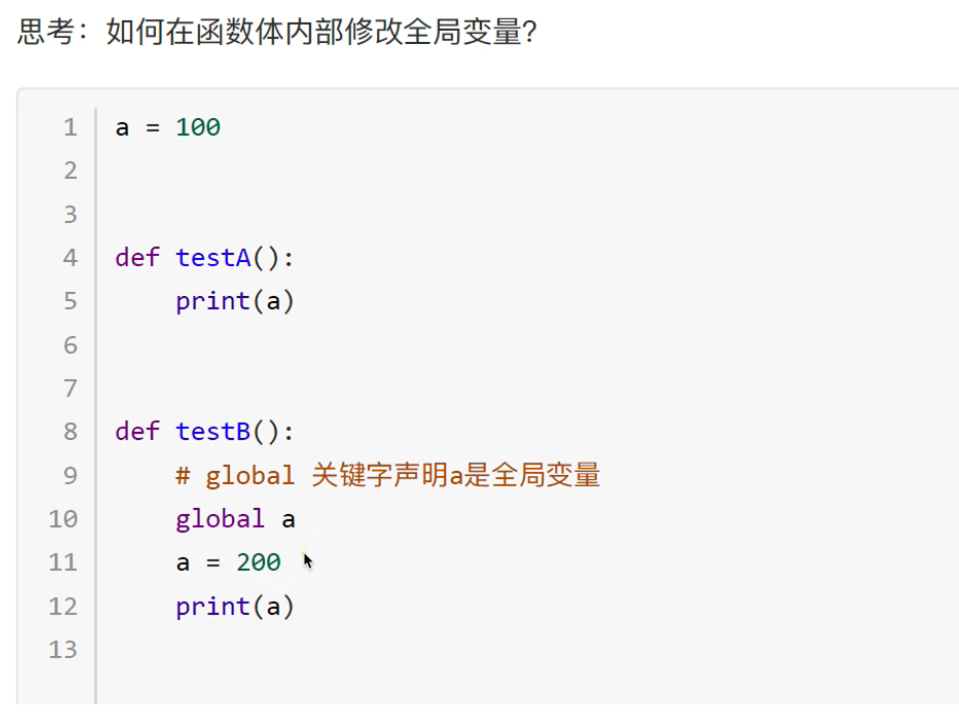
函数的返回值
def test1():
# return 1, 2 # 默认 返回的是 元组
# return [10, 20] # 可以 输出 元组、 列表、 字典
return {'name': 'Python', 'age': 18}
res = test1()
print(res)
函数参数
- 位置参数
# 位置参数
def test1(name, age, gender):
print(f'你的名字{name}, 年龄{age}, 性别{gender}')
test1('TOM', 20, '男') # 参数一一对应, 传入的参数和形参个数不一致时,会报错
- 关键字参数
# 关键字参数
def test1(name, age, gender):
print(f'你的名字{name}, 年龄{age}, 性别{gender}')
test1('ROSE', age=18, gender='男')
# 1. 位置参数要放在关键字参数之前,否者会报错
# 2. 关键字函数没有顺序之分
- 缺省参数
# 缺省参数又叫默认参数
def test1(name, age, gender='男'):
print(f'你的名字{name}, 年龄{age}, 性别{gender}')
test1('TOM', 18) # 你的名字TOM, 年龄18, 性别男
test1('ROSE', 18, gender='女') # 你的名字ROSE, 年龄18, 性别女
不定长参数
# 不定长参数又叫可变参数 返回的是元组
def test1(*args):
print(args)
test1('TOM') # ('TOM',)
test1('TOM', 18) # ('TOM', 18)
关键字不定长参数
# 关键字不定长参数 返回 字典
def test1(**kwargs):
print(kwargs)
test1() # {}
test1(name='TOM', age=18) # {'name': 'TOM', 'age': 18}
id() 的基本使用
a = 1
b = a
print(id(a))
print(id(b))
可变参数 和 不可变参数
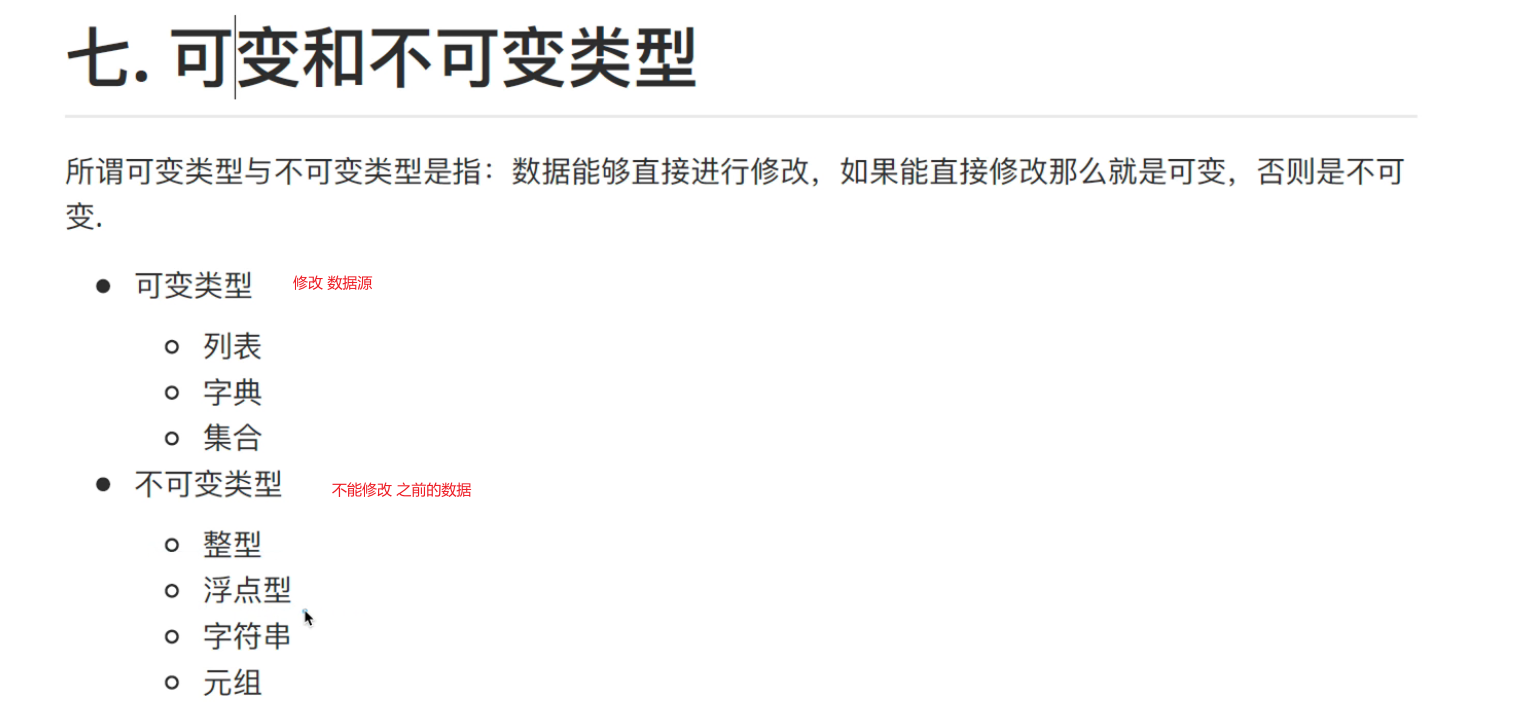
def test1(a):
print(a)
print(id(a))
a += a # 不可变数据: 200 可变数据: [11, 22, 11, 22]
print(a)
print(id(a))
b = 100
test1(b)
c = [11, 22]
test1(c)
函数占位符 和 函数提示文档
def add_info():
"""添加学员信息""" # 用 help() 能够访问到 函数提示文档
pass # 占位符 防止报错
print(help(add_info))


